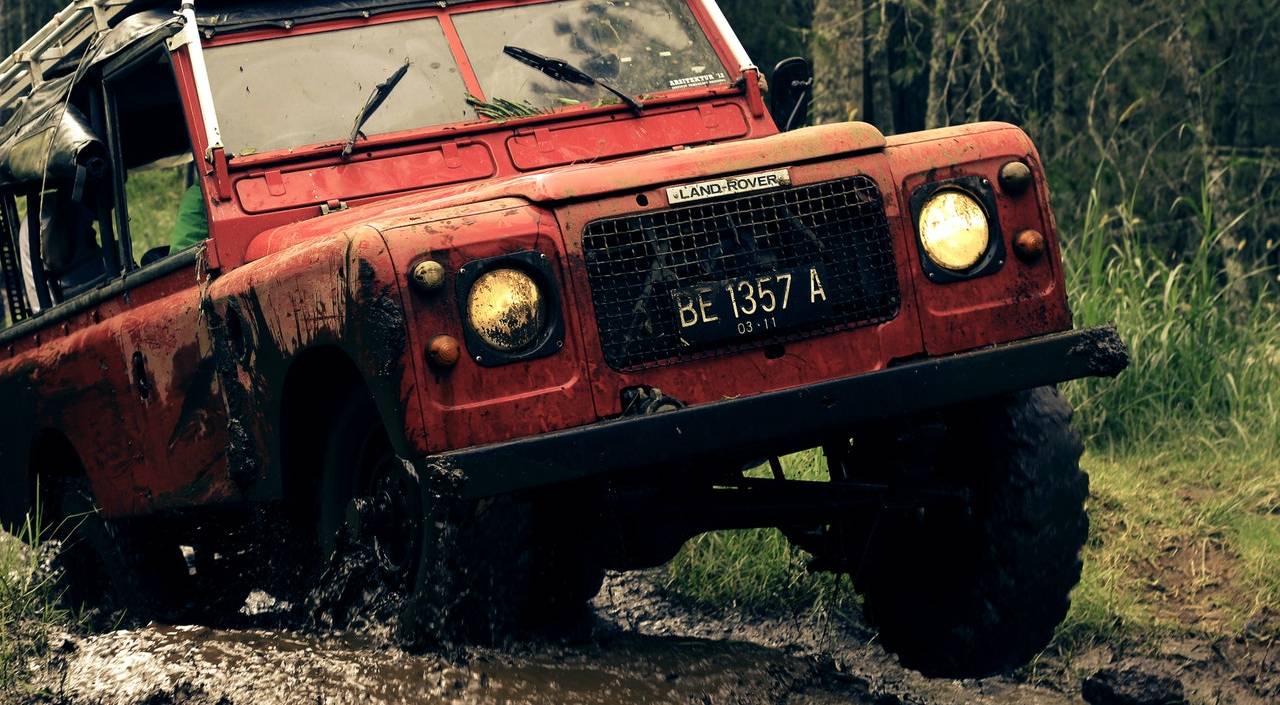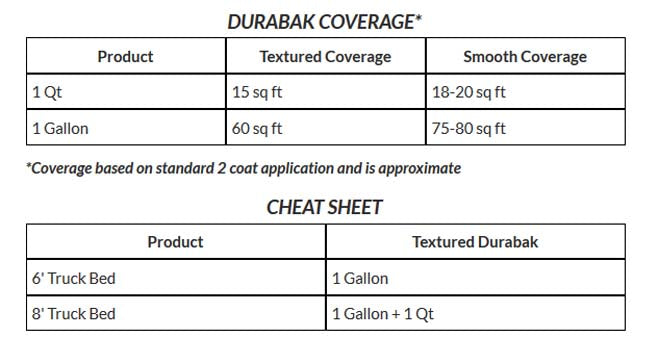Truck Undercoating: Everything you need to know about the Best Undercoating to Keep Your Vehicle Rust Free

Rust is one of the biggest threats to your truck’s performance and reliability. The chances of finding rust developing on your truck’s metal parts significantly increase if you live near the coast or in a region with snowy winters.
The salty air, high humidity, and grit used for winter road treatments make your truck’s bodywork and engine vulnerable to corrosion, especially the undercarriage. The best way to protect the undercarriage parts from rust damage is to apply a protective undercoating product.
What is Truck Undercoating?
A truck undercoating is a sprayed or applied composite coating designed for application on the underside of your vehicle. The composite material may use one or multiple base ingredients, either natural (wax, paraffin) or synthetic (rubber, asphalt, polyurethane).
The purpose of a truck undercoating product is to create a protective layer shielding the vehicle’s underside from exposure to humidity, ice, salt, grease, road brine, and other rust-forming agents.
Benefits of Applying an Undercoating to Your Vehicle
There are several benefits to applying an undercoating to your truck aside from rust protection, including:
Additional protection
Truck undercoating can also protect your vehicle from other hazards, such as corrosion, chipping, and scratching.
Minimize road noise
Some of the best truck undercoating products can even reduce road noise by absorbing sound waves and making the vehicle’s underside easier to clean.
Additionally, despite their similar purposes, undercoating should not be confused with rustproofing. Rustproofing is treating select parts of your vehicle using specific protective waxes, oils, or electronic methods. Rustproofing and undercoating can be combined to provide your vehicle with extra protection.
Is Undercoating My Truck Worth It?
According to CostStudy estimates, the average cost of a single rust repair job varies, depending on the extent of the damage. However, even small rust patches (3” or less) can cost up to $150. More substantial damage may require parts replacement by automotive professionals, which can cost more than $2,000.
A 2017 report by the American Automobile Association (AAA) revealed that U.S. drivers pay approximately $3 billion every year on rust repairs caused by de-icing and de-snowing methods.
In comparison, even the best vehicle undercoating products are relatively inexpensive. For instance, a quart of Durabak 18 costs much less than a typical rust repair job. Yet, it provides your vehicle’s underside with long-lasting protection against the hazards of harsh weather and difficult terrain.
Investing in a premium undercoating for your truck is worth the initial cost. If you intend to keep your vehicle for a long time, applying the best undercoating for trucks keeps it road-worthy for many years.
When the time comes to sell your truck, one of the first things potential buyers look for is traces of rust. If you have kept your vehicle protected and well-maintained, you can negotiate a higher resale price.
Types of Undercoating Products
Although you can find numerous brands of truck undercoating on the market, most fall into one of four categories, depending on the base ingredients: Wax or paraffin-based, rubberized, asphalt-based, and polyurethane-based.
-
Wax and paraffin-based undercoatings
Wax-based and paraffin-based products are one of the traditional methods of rust prevention. These undercoatings employ similar base ingredients to the car waxing products used for cleaning and polishing, but with extra additives to protect your car parts against rust and corrosion.
The primary advantage of wax and paraffin-based undercoatings is the cost. They are the least expensive option available, making them the best undercoating option for tight budgets. They are easy to apply at home, and they seep easily into cracks, seams, and other tiny openings.
However, the primary drawback is durability and protection level under extreme weather. At most, a paraffin-based undercoating will last a year if applied to a vehicle in a moderate climate. The harsher the environment, the shorter its lifespan, which can eliminate the cost advantage.
-
Rubberized undercoatings
Rubberized undercoatings are versatile products that you can use to protect your undercarriage, but also your wheel wells, quarter panels, door skins, floor pans, and any other bare or primed metal parts.
A typical rubberized undercoating requires 30 to 60 minutes of drying time after application. Once dry, the coating protects against rust and corrosion, giving the undercarriage additional abrasion resistance and fully curing in 24 hours. Rubberized undercoatings are flexible and safe to paint over.
The primary drawback of rubberized undercoating is the significant prep work required for it to be effective. All rust-bearing surfaces must be thoroughly cleaned and dried for the coating to be effective. Improper prep work can trap water or humidity between the coating and the bare metal, accelerating rust formation instead of preventing it. For this reason, rubberized undercoatings are typically not recommended as DIY jobs.
-
Asphalt-based undercoatings
Asphalt-based protective coatings are heavy-duty products intended for large trucks, RVs, semi-trailers, and military vehicles.
The main advantage of asphalt-based products is the sheer level of protection provided. Not only do they protect against rust and corrosion, but they also shield your vehicle’s underside from impact and abrasion. Some products even come with rubberizing agents, providing a degree of road noise reduction.
Asphalt-based undercoatings have unmatched durability, making them the best undercoating to prevent rust in extreme environments and lasting 3 to 5 years on average.
However, asphalt-based undercoatings have many significant drawbacks. They require at least 2 hours of drying time and only fully cure in 24 to 48 hours. Additionally, painting over these coatings is impossible, and there are no color options besides black.
It is the heaviest of all undercoatings on the market. If you need to coat a significant surface area, these products may increase your vehicle’s curb weight enough to impact its fuel economy negatively.
-
Polyurethane-based undercoatings
Polyurethane-based coatings are often used industrially as anti-corrosion coatings for construction steel or scratch-resistant paints. For the best undercoating for your truck, choose premium-grade Durabak 18 polyurethane paint.
The base material, polyurethane, was initially used as a 100% synthetic substitute for rubber in the 1940s. This property makes polyurethane-based undercoatings similar to their rubberized counterparts, providing noise reduction and high flexibility. However, it comes with numerous advantages that other coatings do not offer.
For instance, polyurethane coatings displace salt, moisture, and other rust-forming agents, making it nearly impossible for rust to form underneath once applied. Polyurethane bonds with bare, unprotected metal, protecting against rust, corrosion, abrasion, rock and gravel impacts, and humidity.
Additionally, like wax and paraffin-based coatings, it seeps easily into small cracks and openings. It is easy to use and apply to your truck’s undercarriage using a roller or pump sprayer, making it the best undercoating for DIY jobs.
The only drawback of polyurethane coatings is the prep time required before application. You must prepare all surfaces thoroughly by sanding, priming, and cleaning them before applying the Durabak paint.
However, once applied and cured, you get a coating with long-lasting performance (3 to 5 years). Although you can paint over it, Durabak 18 comes in many colors, eliminating the need for a paint job.
How to Prepare a Truck Undercarriage for Durabak
Examine all surfaces underneath the truck. If you see surface rust on your undercarriage parts, remove it using 50-grit sandpaper and apply a rust inhibitor. Do not wait until the rust has attacked the metal to the point of creating holes or heavy pitting.
If there is no rust, you can begin the prep work. There are three preparation phases: Sanding, etching, and cleaning.
Start by sanding all surfaces with 80-grit sandpaper, wiping away any residue as needed. Once you have roughed the parts, apply a self-etching primer suitable for metal parts, then let it dry. Clean the primed surfaces with a thin layer of xylene, then let it dry again.
Spray or roll a thin layer of Durabak directly onto the bare metal parts in short strokes until you have covered all surfaces. Allow it to dry for 1-2 hours before applying a second coat. The paint needs to fully cure for 5-6 days before you can hit the road again.
Durabak Application Tips
- Tape off areas you don’t want to paint with 3M blue tape but ensure you remove it immediately after applying the second coat
- Thoroughly stir your can of Durabak before starting
- Open one can at a time because Durabak starts to cure as soon as it is exposed to air
- If the paint thickens, add 15% xylene solution to thin it
Protect Your Vehicle’s Underside With Durabak
With Durabak 18, you can protect your truck against rust, prolonging its lifespan and resale value. The premium-grade polyurethane-based formula is ideal as an undercoating. Durabak protects your vehicle’s undercarriage from the effects of rust, corrosion, humidity, and harsh road conditions. It is easy to apply, easy to clean with soap and water, and long-lasting.
FAQs
Can I apply Durabak as an undercoating on all vehicles?
Durabak can protect the undercarriage of almost any motor vehicle, from compact hatchbacks and family sedans to pick-ups large enough to fit a truck sleeper mattress. You can even use it to protect your RVs and vans.
Can you spray undercoating on already rusted parts?
You should remove the surface rust and thoroughly prepare the working surface before applying any undercoating. Otherwise, the coating will be applied unevenly and risks peeling off once dry.
Do I have to remove the wheels before applying an undercoating?
Removing the wheels is necessary to get full access to the wheel wells. It also prevents you from accidentally spilling undercoating onto the tires, which can damage them or reduce their grip.
Which is better, rustproofing or undercoating?
Rust roofing is designed to address specific undercarriage parts and highly exposed areas like the fender or tailgate. Rustproofing is often performed on a smaller scale than undercoating. Undercoating creates a rust-proof layer for the entire undercarriage offering better overall protection.
How often should you give your vehicle a new undercoat?
It depends on the material you use. For most wax and rubberized undercoatings, you need to reapply a new undercoat every year. Durabak is highly durable, lasting up to 5 years.



